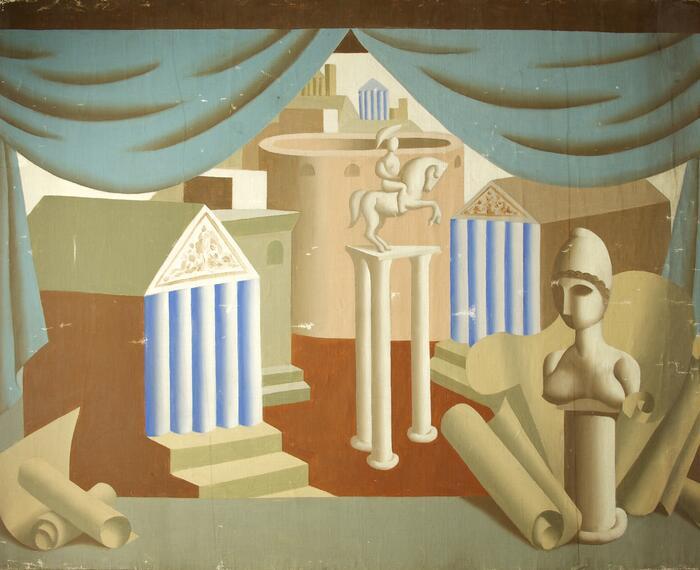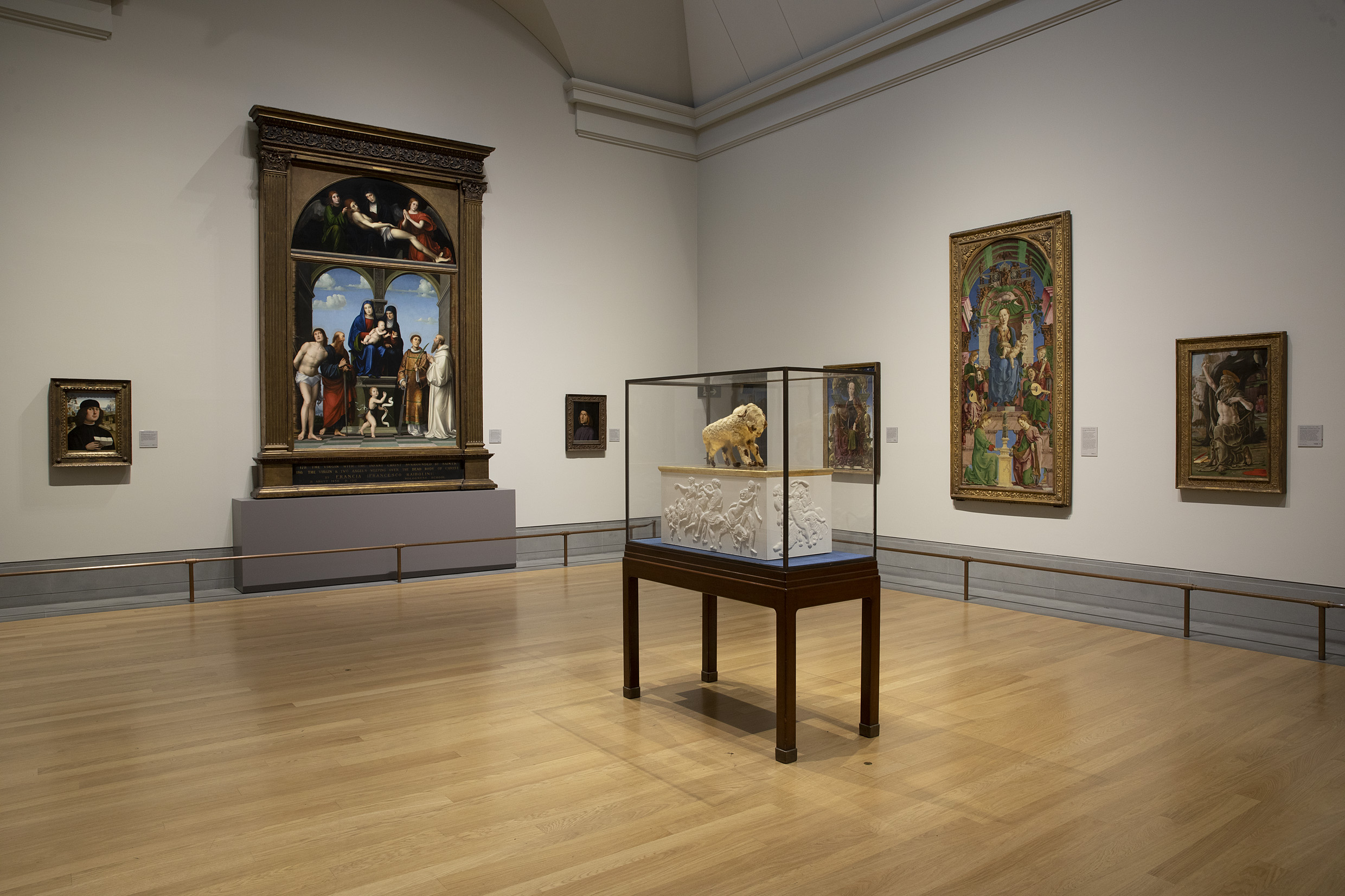


National Gallery, London, rooms 57 and 58
Ali Cherri is the second artist in residence at the National Gallery, completing his time there with this display, just as we enter the third year of the pandemic, and while the world watches in horror as Ukraine defends itself against a brutal Russian invasion. These extraordinary circumstances throw into sharp focus the truism that museums are not timeless, neutral spaces; their collections accrue acute new meanings with the ever-changing contexts of our lives.
The residency project includes a partnership between the National Gallery and a museum outside of London, so that each artist in a sense responds to two collections. This year the partner is the Herbert Museum and Art Gallery in Coventry, which sits alongside the ruins of the cathedral that was destroyed by German carpet-bombing on the night of 14 November 1940. For anyone under 60, the ruins might have a slightly romantic, gothic aspect, but they remain a physical reminder of the mortal wounds inflicted on the city and its people during the Second World War.
Cherri is of a generation who grew up in Beirut as the city was being torn apart by the civil war in Lebanon. Guiding his practice as an artist ever since has been the awareness of trauma - as manifested visibly in the built environment, and as carried, often invisibly, in the bodies and minds of survivors. He has long been fascinated by museums – how they preserve our material culture, how they frame and narrate it, carrying objects away from their original functions, sometimes (often) obscuring the histories of violence that brought them to the museum in the first place.
A visit to the National Gallery offers an abundance of images of violence and suffering: whether in the many depictions of the crucifixion in its renaissance collections, or the graphic renderings of beheadings in the recent exhibition of work by Artemisia Gentileschi. Given an ‘access all areas’ pass, Cherri has chosen to respond to the history of violent attacks on paintings themselves. He has chosen five paintings, with their attendant stories, including Velasquez’ Rokeby Venus, attacked with a chopper by Suffragette, Miss Richardson, in protest at the treatment suffered by Emmeline Pankhurst; and Leonardo da Vinci’s Burlington House Cartoon, seriously damaged in 1987 when a man suffering from a mental illness shot it at point blank range with a sawn-off shotgun.
Five elegant dark wood and glass cabinets sit lightly down the centre of galleries 57 and 58, each one the artist’s response to one of the damaged works. Treading a line between masterpieces such as Boticelli’s Venus and Mars, or Piero del Pollaiuolo’s Martyrdom of St Sebastian, the context would be daunting for any artist. Instead Cherri’s works, bracketed by their cabinets, enter into respectful dialogue with their illustrious neighbours, while at the same time retaining their quality of direct provocation. The first cabinet one encounters is the one addressing the damage to the Leonardo da Vinci cartoon depicting the virgin and child. Sitting in the same sightline as the Martyrdom of St Sebastian, a rendition of the damage caused by the gunshot is held up on a post-like votive object, mirroring the saint, tied to a tree and targeted by archers. Connecting the attack on the work of art with assault on the human body, the assemblage also includes a copy of John Berger’s Ways of Seeing, as well as copies of The Guardian and Independent newspapers carrying front page stories of the act of vandalism. Rather acidly, John Berger wrote of the work in his seminal 1972 book that "It has acquired a new kind of impressiveness. Not because of what it shows – not because of the meaning of its image. It has become impressive, mysterious because of its market value".
Museums rarely, if ever, foreground the histories of attacks on their collections – largely, for fear of copycats – so it is extraordinary to spend time considering the motivations of the perpetrators, as well as the symbolic value of the target works of art themselves. In Cherri’s work relating to the Rokeby Venus, the milky-pale reclining nude of the original painting, gazing at her reflection in a game of who’s looking at whom, is translated into the supine form of a Neolithic fertility goddess. Weightily hewn from a massive piece of wood, her scarified body asserting different registers of beauty in cultures separated by millennia as well as geography. Beside her a plaster cast of a classical female head rests on its side, a mournful glass eye gazing down into the pool of a mirror. Its effect is uncanny, and suggests, perhaps, the classical, western-centric frame of reference we instinctively bring to the interpretation of objects.
Ali Cherri’s new body of work will be shown at the Herbert in Coventry from July, and thanks to our supporters Anna Yang and Joseph Schull, the legacy of the residency will be that one of the works enters the permanent collection in Coventry later this year.
Caroline Douglas
Director
National Gallery, Trafalgar Square, London WC2N 5DN.
Open Thursday - Saturday, 10am - 6pm, Friday 10am - 9pm. Exhibition open until 12 June